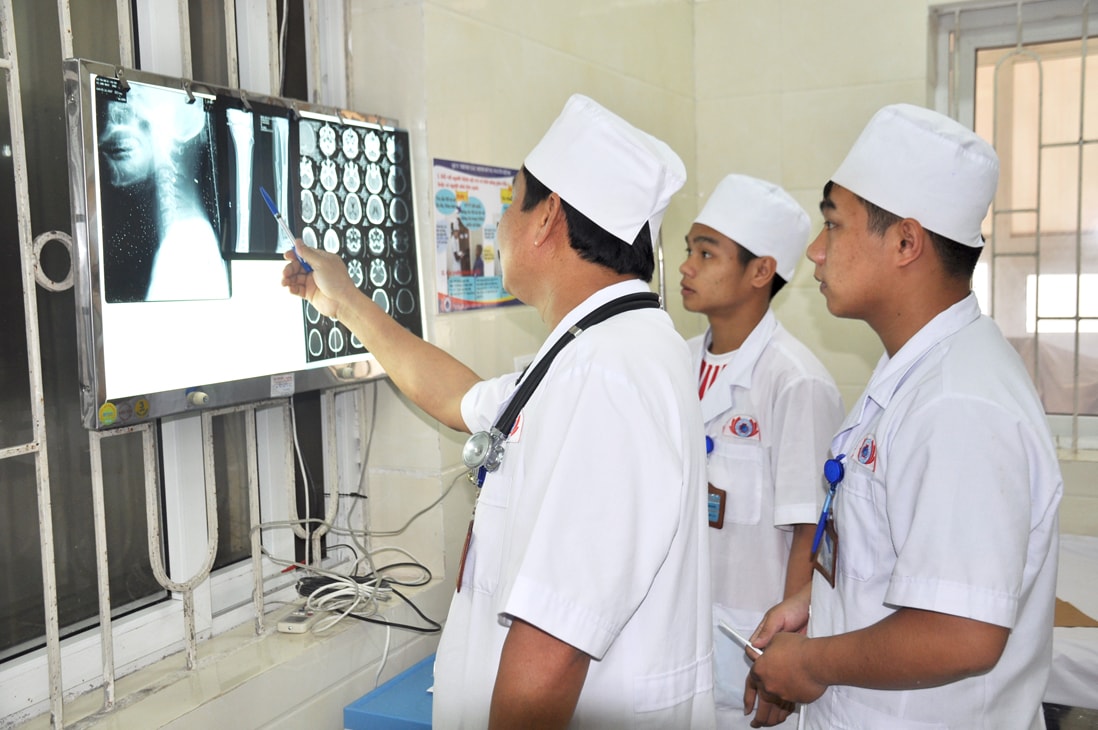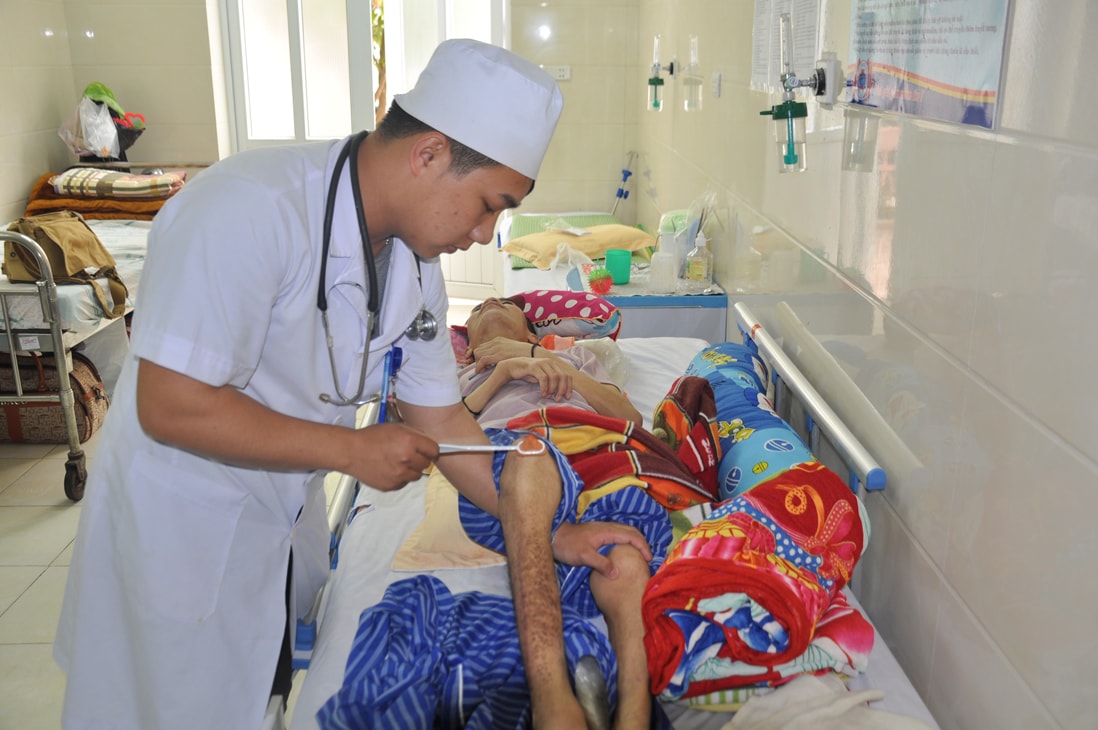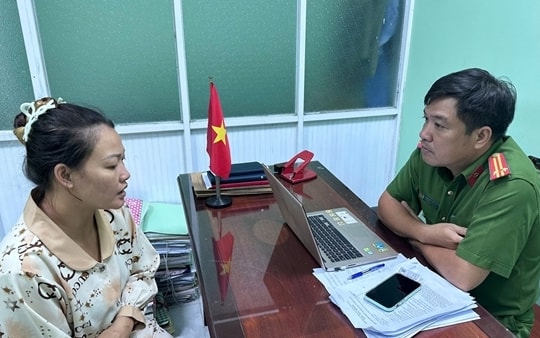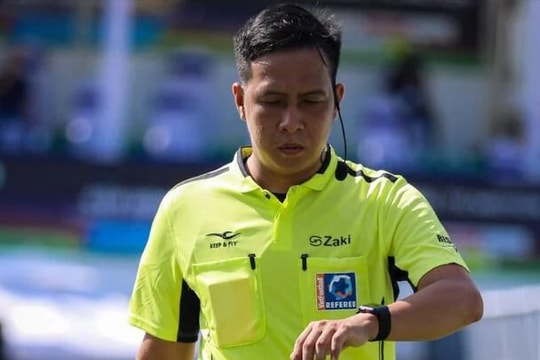Rehabilitation after fracture surgery
(Baonghean) - Nghe An Rehabilitation Hospital is one of the trusted addresses after surgery for bone fractures. There are many patients who have had very serious accidents, after surgery they lie in one place and seem to be completely disabled, but when they come to the rehabilitation hospital for treatment, they have returned to work normally.
Patient Truong Xuan Thao (born in 1947) suffered a brain hemorrhage 6 months ago. First treatment at the district general hospital. After a period of treatment, the doctor discharged the patient in the following condition: mild paralysis of the left half of the body, difficulty speaking, slurred speech, weak walking, difficulty moving the left arm... The patient went home to practice, fell down the stairs and then could not walk on the left leg, but the arm could still move as before the fall...
The patient and his family wished to be transferred to Nghe An Rehabilitation Hospital (located in Cua Lo Town) for rehabilitation. After being admitted to the hospital on March 23, 2018, the patient was screened at the Emergency Department and transferred to the Department of Occupational Therapy - Nghe An Rehabilitation Hospital for inpatient treatment.
 |
| Reading diagnostic films for treatment methods for patients with broken bones at Nghe An Rehabilitation Hospital. Photo: Thanh Hien |
Doctor Ho Thi Phuong B - the person who directly examined said: After contacting and asking about the patient's condition, the examination showed that the patient's left arm was slightly paralyzed, with a muscle test at level 3. However, the left leg could not be moved, and movement was very painful in the left femoral neck area... Feeling suspicious, Doctor Phuong B ordered the patient to have an X-ray of the pelvis, neck, femur, and a chest X-ray. The result: the patient had a fracture of the left femoral neck...
Immediately, Dr. Phuong B reported to the head doctor, invited a consultation and agreed to contact Nghe An Orthopedic Hospital to decide to transfer to Nghe An Orthopedic Hospital for femoral head replacement surgery, then continue rehabilitation. Patient Truong Xuan Thao said: "After femoral head replacement surgery at Nghe An Orthopedic Hospital, I was transferred to rehabilitation at Nghe An Rehabilitation Hospital. Currently, my health is stable. I can take care of myself and move around more easily."
The case of patient Truong Xuan Thao is not the only one. There are many patients with broken bones, seemingly disabled, but after being rehabilitated at Nghe An Rehabilitation Hospital, their health and spirit have returned to normal. Typically, there are cases where they return to work and become the main pillars of their families in economic development.
Doctor Thai Thi Xuan - Director of Nghe An Rehabilitation Hospital said: When there are cases of bone fractures, not only the bone is damaged but also the muscles, tendons, and ligaments are damaged. Depending on the level of injury, the patient will be given a cast or have to have surgery to fix the bone and stitch up the torn or crushed soft tissue.
After a period of immobilization, the patient has almost no movement in the injured area, so it is easy to lose sensation and have signs of atrophy in these areas. There are cases where pain and inability to move have led to long-term pressure ulcers, even respiratory infections, limb thrombosis, decreased bowel and bladder reflexes, etc. These are common symptoms in the elderly. Therefore, after surgery, the patient must be self-conscious, persistent, endure pain, restore joint movement, maintain muscle strength, and the rate of bone healing will increase thanks to movement.
According to Dr. Thai Thi Xuan at Nghe An Rehabilitation Hospital, patients will be rehabilitated in 2 stages:
1. Rehabilitation in the immobilization phase: This is the splinting and plastering phase, the postoperative phase after bone fusion surgery.
Purpose:Avoid complications (ulcers, pneumonia, etc.); reduce pain, prevent edema; avoid muscle atrophy and joint stiffness due to immobility; maintain movement of non-immobilized body parts.
Method:Avoid complications by changing posture, taking care of pressure points. Using heat: The effect of using heat is to reduce pain, relieve discomfort, and is beneficial when practicing active movement. Use hot water bags, infrared lamps. Massage: regularly massage the fracture site to help it heal. Only gently massage with your hands and do not use any oils, alcohol, or massage drugs to rub on the joints, because this can cause stiffness and calcification of the joints. At the same time, combine exercises to maintain muscle strength such as isometric contractions or static contractions (muscle bundle length does not change, joints do not move). When the joint moves but still hurts a lot, practice stretching, when the pain is less, practice muscle contraction. Or practice active movement: for muscles, joints are not immobile.
 |
| Doctor Che Xuan Hung - Emergency Department is checking the reflexes of a patient with a broken leg who is undergoing rehabilitation at the hospital. Photo: Thanh Hien |
2. Post-immobilization rehabilitation.
Method:Reduce swelling and pain with physical therapy methods: heat, electrophoresis, massage, combined with electric pulses, acupuncture, infrared light, paraffin wrapping, electromagnetic field, therapeutic ultrasound, electrolysis, drug wrapping, electric pulses...
Joint movement: Joints that are immobile for a long time will become stiff due to shortened muscles, contracted joint capsules, increased fatty production of synovial fluid, and thinning of cartilage. Therefore, joint movement is the best way to pump synovial fluid in and out, nourish the joint, and make it supple. When the bone has healed firmly, joint traction can be used to break the stiffness.
Learning to walk:Use crutches to practice walking while the bone is not yet healed. In the next stage, use a cane when the bone is almost healed. When the bone is healed and there is no pain at the fracture site, remove the cane and practice walking as usual.
Strong muscle training:Muscle strengthening exercises such as stretching, passive and active movement, stair climbing, kneeling, standing up and sitting down...
Practice daily activities: Practice daily activities such as going up and down stairs, house steps, squatting and standing up. For hand bone injuries, practice gripping and opening the hand (use an egg-shaped stone to grip), practice holding a pen and chopsticks, avoid bending or crooked hands.
Scientific and Technical Council - Nghe An Rehabilitation Hospital, with the spirit: "All for patient satisfaction"; "Where patients place their trust"; Building the first Green - Clean - Beautiful "Hospital - Hotel" model in Nghe An.
Address: No. 220, Binh Minh Street, Cua Lo Town, Nghe An
Contact phone number: Clinic phone number: 02383.949.709 - 24/7 hotline number: 02383.952.020 - Hotline number: 0966.251.414 - Hotline number: 0912.002.210 - Director phone number: 0912.487.568.



